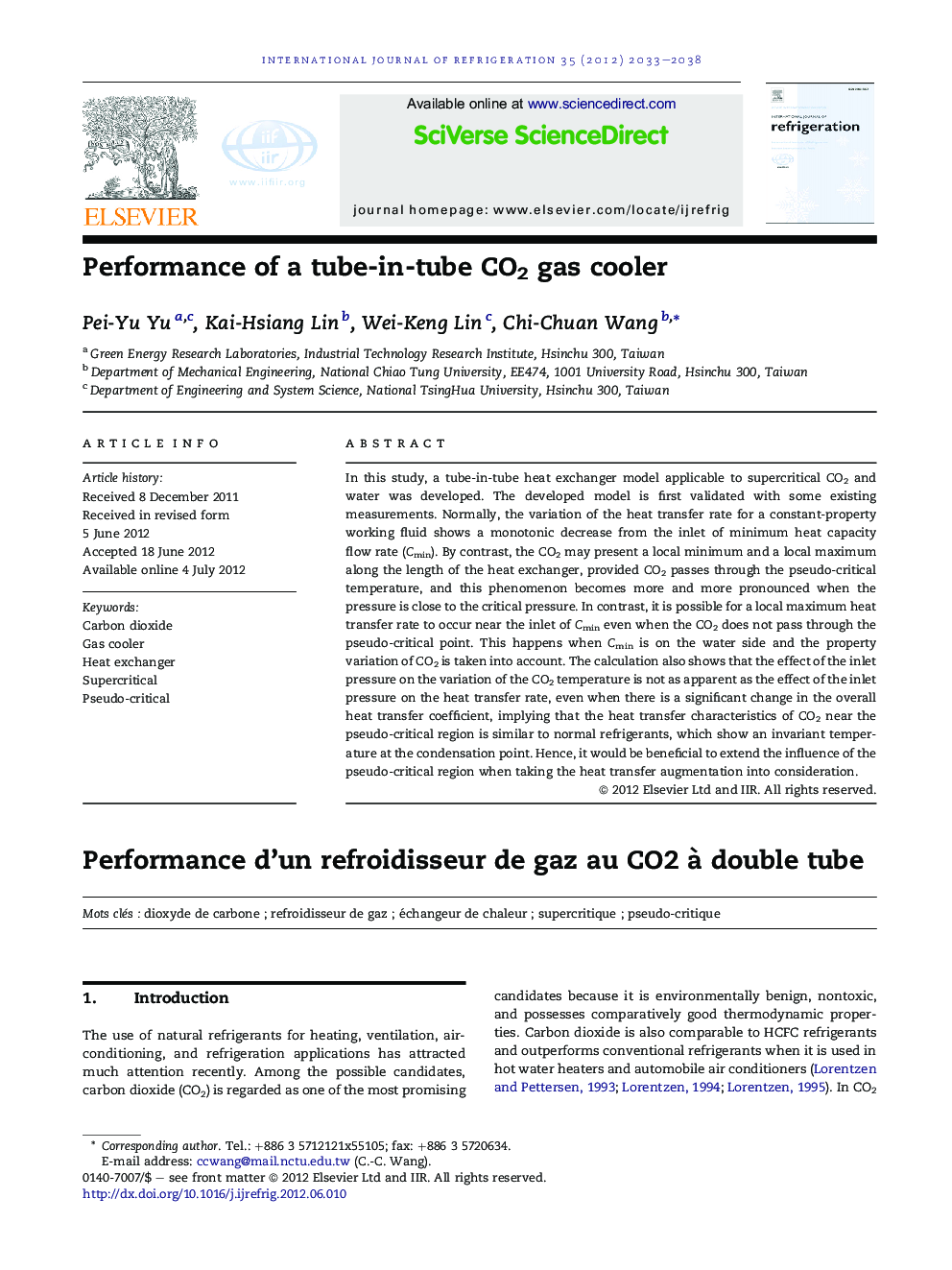| Article ID | Journal | Published Year | Pages | File Type |
|---|---|---|---|---|
| 787099 | International Journal of Refrigeration | 2012 | 6 Pages |
In this study, a tube-in-tube heat exchanger model applicable to supercritical CO2 and water was developed. The developed model is first validated with some existing measurements. Normally, the variation of the heat transfer rate for a constant-property working fluid shows a monotonic decrease from the inlet of minimum heat capacity flow rate (Cmin). By contrast, the CO2 may present a local minimum and a local maximum along the length of the heat exchanger, provided CO2 passes through the pseudo-critical temperature, and this phenomenon becomes more and more pronounced when the pressure is close to the critical pressure. In contrast, it is possible for a local maximum heat transfer rate to occur near the inlet of Cmin even when the CO2 does not pass through the pseudo-critical point. This happens when Cmin is on the water side and the property variation of CO2 is taken into account. The calculation also shows that the effect of the inlet pressure on the variation of the CO2 temperature is not as apparent as the effect of the inlet pressure on the heat transfer rate, even when there is a significant change in the overall heat transfer coefficient, implying that the heat transfer characteristics of CO2 near the pseudo-critical region is similar to normal refrigerants, which show an invariant temperature at the condensation point. Hence, it would be beneficial to extend the influence of the pseudo-critical region when taking the heat transfer augmentation into consideration.
► A tube-in-tube heat exchanger model applicable for supercritical fluid CO2 and water. ► The CO2 gas cooler shows local maximum heat transfer rate nearby the pseudo-critical temperature. ► This phenomenon becomes more and more pronounced when the pressure is close to the critical pressure. ► It is beneficial to lengthen the influence of pseudo-critical region for heat transfer augmentation.
